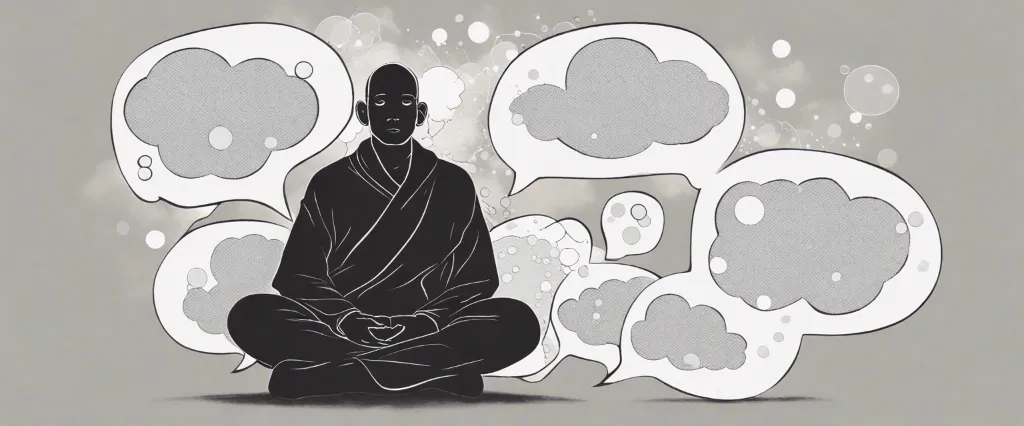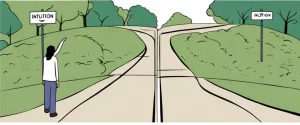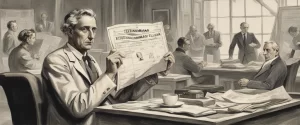
In the vast realm of literature, there are certain books that carry the power to deeply touch our souls, provoke introspection, and inspire profound personal growth. “Think Like a Monk” by Jay Shetty and “Reasons to Stay Alive” by Matt Haig undoubtedly fall under this category, albeit in different ways. While both books delve into the depths of human existence and offer insights on navigating life’s challenges, they approach these topics from contrasting perspectives and showcase distinct personal journeys.
Jay Shetty’s “Think Like a Monk” presents a thought-provoking exploration of ancient wisdom blended with modern practicality. Drawing upon his experience as a former monk, Shetty shares transformative lessons, guiding readers on a path toward greater bliss, purpose, and fulfillment. Through rich anecdotes, philosophical reflections, and actionable advice, he encourages a shift in mindset, inviting readers to reframe their approach to daily life. Shetty’s book resonates with those seeking guidance on how to detach from the chaos of the outside world, discover their true selves, and cultivate inner peace in the midst of chaos.
On the other hand, Matt Haig’s “Reasons to Stay Alive” offers a deeply personal account of his struggle with mental health, providing an intimate glimpse into the shadows of depression and anxiety. Haig crafts a riveting journey that captivates readers with raw vulnerability and evocative prose. Reflecting on his own experiences, he explores both the depths of despair and the glimmers of hope that kept him going during his darkest moments. “Reasons to Stay Alive” not only serves as a lifeline for those who battle their own mental demons but also acts as a compelling narrative that raises awareness and sparks conversations about mental health in society.
While “Think Like a Monk” and “Reasons to Stay Alive” may differ in their thematic concerns, they intersect in their shared mission to awaken individuals to a more meaningful existence. Shetty’s book emphasizes the power of self-reflection, mindfulness, and the pursuit of a purpose-driven life, while Haig’s work highlights the importance of resilience, empathy, and the recognition that no one is ever truly alone. By exploring the depths of the human psyche and offering practical insights, both authors strive to empower readers to confront their inner battles and embrace a life marked by authenticity, growth, and joy.
This comparative study aims to delve into the core themes, writing styles, and impact of these two influential literary works. By delving into the virtues and limitations of each book, we hope to gain a comprehensive understanding of the transformative powers they possess and the lessons they offer for personal growth and self-discovery. Through this exploration, we will uncover the unique strengths and perspectives that make “Think Like a Monk” and “Reasons to Stay Alive” significant contributions to contemporary literature and invaluable resources for readers seeking wisdom, resilience, and the courage to navigate life’s complexities.
Brief Summary of Two Books
Think Like a Monk by Jay Shetty
“Think Like a Monk” by Jay Shetty is a self-help book that combines ancient wisdom with modern practicality to guide readers towards a more purposeful and fulfilling life. Drawing from his own experiences as a monk, Shetty shares insights and techniques to help readers find inner peace, improve focus, overcome negative thoughts, and build strong relationships. The book explores various topics such as mindfulness, gratitude, intention-setting, and service to others, offering practical exercises and strategies for personal growth. Ultimately, “Think Like a Monk” aims to help individuals break free from the distractions of the modern world and discover their true potential by adopting a monk-like mindset.
Reasons to Stay Alive by Matt Haig
“Reasons to Stay Alive” is a memoir written by Matt Haig, which explores his personal experience with depression and anxiety. The book takes the reader through Haig’s darkest moments, including his suicide attempt, and then shows how he managed to find reasons to keep going and ultimately thrive.
Haig recounts his struggle with mental health, sharing raw and honest details about his despair, panic attacks, and the existential crisis that consumed him. He also discusses the impact of depression on his relationships, work, and overall well-being. However, amidst the darkness, Haig brings light by describing the coping mechanisms and support systems that helped him navigate his way back to a better mental state.
Through personal anecdotes, Haig highlights the importance of therapy, medication, exercise, mindfulness, and the support of loved ones in his recovery journey. He also emphasizes the significance of accepting and embracing one’s mental health struggles, promoting open conversations about it, and eradicating the associated stigma.
“Reasons to Stay Alive” serves as a beacon of hope for those who may be going through similar difficulties. Haig’s personal story, filled with poignant insights and sincere reflections, inspires readers to find their own reasons to persevere, reminding them that even in the darkest times, there is always hope.
Comparison between Two Books

Similarities in Mental Health
Both Think Like a Monk by Jay Shetty and Reasons to Stay Alive by Matt Haig touch upon mental health and provide valuable insights on how to navigate through challenging times. Here are some similarities regarding mental health found in these books:
1. Normalizing mental health struggles: Both authors emphasize the importance of normalizing discussions around mental health. They encourage readers to acknowledge and accept their struggles without judgment, highlighting that it is a common human experience.
2. Self-awareness and introspection: Both books emphasize the significance of self-awareness and the need to introspect in order to understand one’s emotions, thoughts, and behaviors. Shetty and Haig encourage readers to engage in self-reflection as a means to recognize patterns, triggers, and areas of personal growth.
3. The power of mindfulness: Mindfulness practices are advocated by both authors as an effective tool for managing mental health. They stress the importance of being present in the moment, observing thoughts without judgment, and cultivating a sense of inner calm and awareness.
4. Overcoming past traumas: Shetty and Haig address the impact of past traumas on mental health and provide guidance on how to overcome them. They emphasize that healing can be achieved through self-compassion, therapy, forgiveness, and letting go of past pain.
5. Cultivating positive habits and rituals: The authors suggest the integration of positive habits and rituals into daily routines to improve mental well-being. These habits can include meditation, gratitude practices, journaling, exercise, and nurturing healthy relationships.
6. Holistic approach to mental health: Shetty and Haig both advocate for a holistic approach to mental health, taking into account various aspects of life, such as physical health, relationships, purpose, and spirituality. They emphasize the interconnectedness of these areas and how addressing each component can contribute to overall mental well-being.
7. Empathy and connection: Both authors stress the importance of empathy and human connection in promoting positive mental health. Shetty and Haig emphasize the significance of building meaningful relationships, seeking support from loved ones, and developing compassion towards oneself and others.
8. Growth mindset and resilience: Both books emphasize the importance of cultivating a growth mindset and developing resilience in the face of challenges. Shetty and Haig encourage readers to embrace setbacks as opportunities for growth, to learn from failures, and to persevere through difficult times.
It is important to note that while these books share similarities in their approach to mental health, their overall themes and perspectives may differ. Therefore, it is valuable for readers to explore both texts for a comprehensive understanding of mental health and well-being.
Divergences in Mental Health
Think Like a Monk by Jay Shetty and Reasons to Stay Alive by Matt Haig are two influential books that delve into mental health from different perspectives. While both books aim to provide insights and guidance on navigating the challenges of mental health, they diverge in their approach, focus, and personal experiences.
Firstly, Think Like a Monk by Jay Shetty draws inspiration from his time as a monk and incorporates spiritual teachings into the realm of mental health. Shetty shares his own experiences and provides practical advice on how to cultivate a calm, focused mind and find purpose. The book emphasizes the importance of mindfulness, meditation, and self-reflection as avenues towards improved mental well-being. Shetty’s perspective infuses spirituality into the approach to mental health, as he believes that inner peace and contentment can be achieved through connecting with one’s deeper self and embracing a more conscious way of living.
On the other hand, Reasons to Stay Alive by Matt Haig takes a deeply personal and introspective approach to mental health. Haig shares his own struggles with depression and anxiety, offering a raw and honest account of his darkest moments. The book explores the complexities of mental illness, delving into the profound impact it has on every aspect of life, including relationships, self-identity, and purpose. Haig focuses on his journey of finding reasons to keep living, providing hope and empathy to others who may be going through similar struggles. His narrative style, blending memoir and reflection, allows readers to relate to his experiences, creating a sense of solidarity and understanding.
The divergence regarding mental health in these books lies in their core foundations and approaches. Think Like a Monk approaches mental health from a spiritual and philosophical angle, advocating for a deeper connection with oneself and the world around us. It emphasizes the importance of self-awareness, self-discipline, and self-discovery as tools for improving mental well-being. On the other hand, Reason to Stay Alive takes a more psychological and introspective approach. It explores the depths of mental illness, shedding light on the difficulties faced by those battling depression and anxiety, offering a perspective that focuses on the power of resilience and finding hope amidst despair.
In conclusion, while both Think Like a Monk and Reasons to Stay Alive discuss mental health, they diverge in their approach and perspectives. Think Like a Monk draws on spiritual teachings while offering practical guidance, emphasizing mindfulness and self-reflection. On the other hand, Reasons to Stay Alive provides a deeply personal account of struggling with mental illness, highlighting the power of resilience and finding reasons to keep living. Ultimately, these books offer unique insights and guidance to those seeking to understand and improve their mental well-being.

Conclusion
Both “Think Like a Monk” by Jay Shetty and “Reasons to Stay Alive” by Matt Haig are highly acclaimed books that offer valuable insights and perspectives. The choice between the two ultimately depends on your personal interests and desired takeaways.
“Think Like a Monk” delves into the wisdom and teachings offered by monks, providing practical advice on how to navigate modern challenges and find inner peace. Jay Shetty’s book offers guidance on mindset, relationships, and purpose, drawing from his own experiences as a former monk. It provides a compelling blend of spirituality and self-improvement, with actionable strategies for personal growth.
On the other hand, “Reasons to Stay Alive” by Matt Haig is a deeply personal memoir that explores mental health issues and the author’s battle with depression and anxiety. This book offers an intimate and honest account of Haig’s experiences, seeking to offer comfort and hope to others who may be struggling. It touches upon important themes such as resilience, hope, and the power of human connection.
Both books have garnered praise and resonate with readers, but their subject matters and approaches differ significantly. If you are interested in spirituality, self-improvement, and mindfulness, “Think Like a Monk” could be a more suitable choice. If, however, you’re searching for a raw and relatable account of mental health struggles, “Reasons to Stay Alive” may be the more worthy read.
Consider your current interests, personal objectives, and the subject matter that resonates with you the most to make an informed decision.



